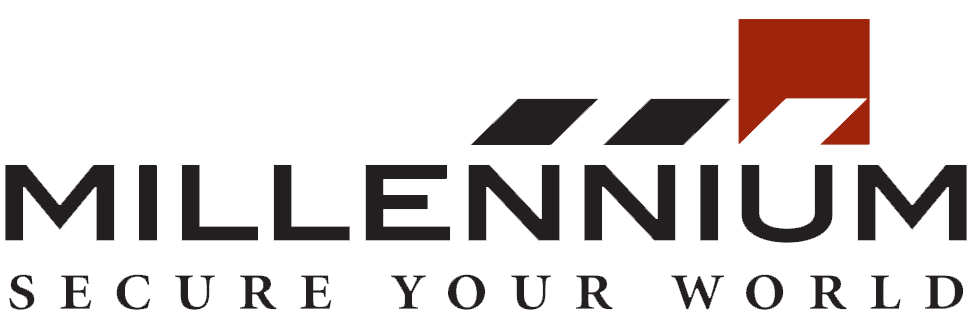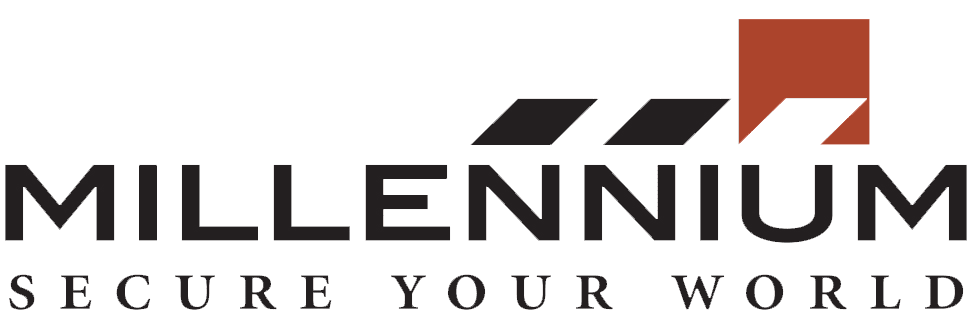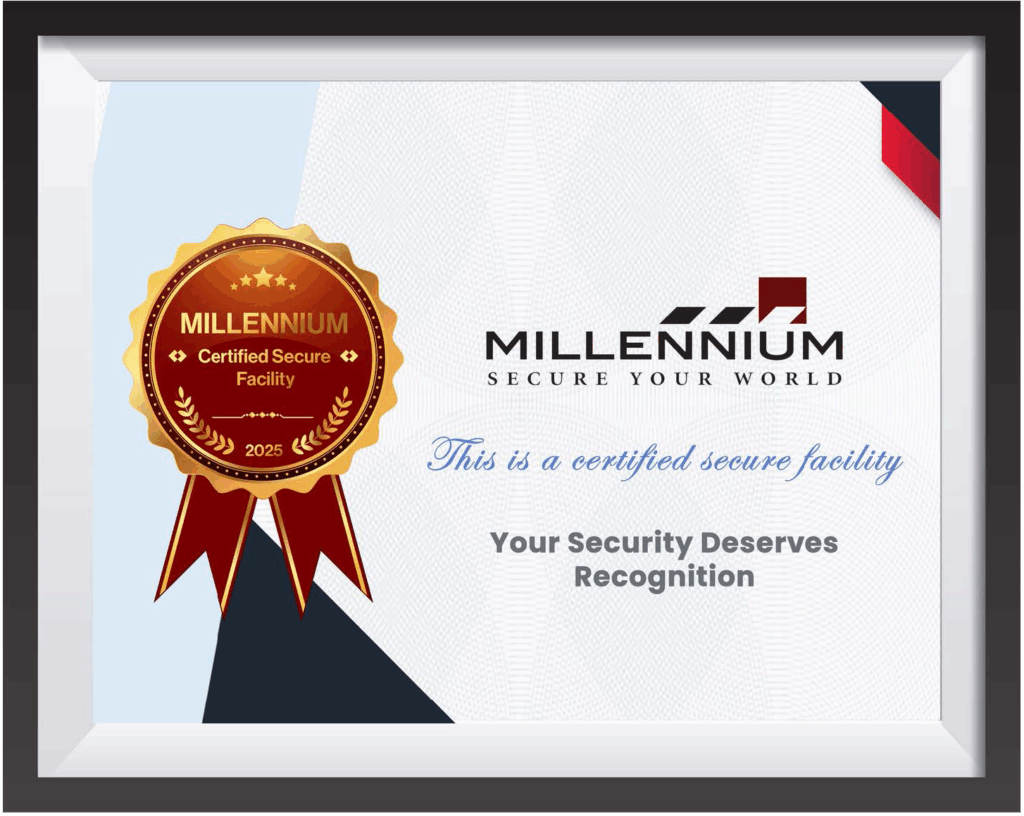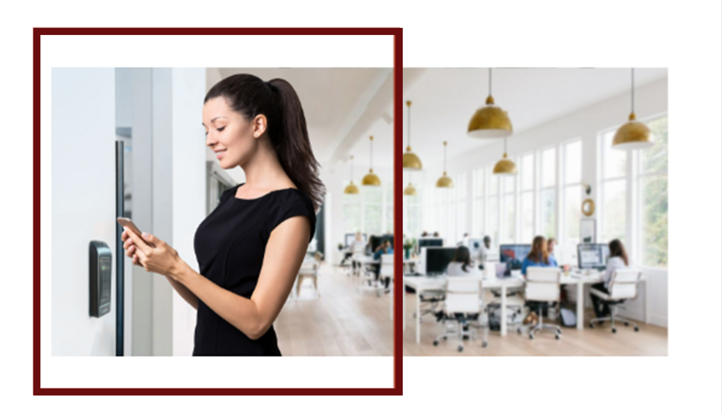The Power of Access Control For Secure Year-End Building Closures
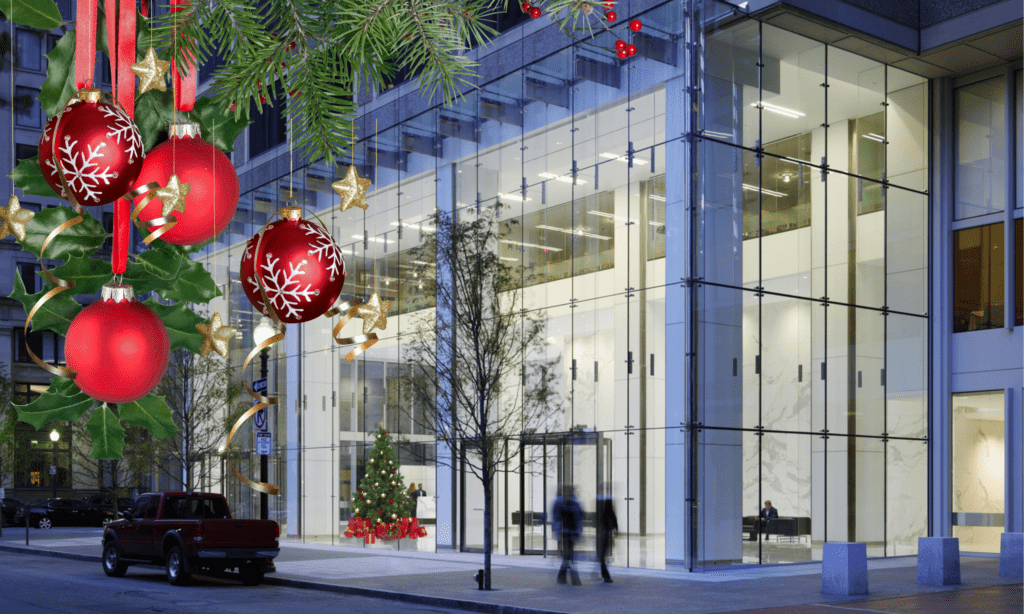
As we approach the end of the year, it’s not just holiday festivities that demand our attention; it’s also the need to ensure that our buildings are securely closed for the year ahead. This is a critical time for businesses, schools, and organizations to assess their security measures, and one aspect that shouldn’t be overlooked is the power of Access Control. Access control systems play a pivotal role in enhancing building security protocols, providing a robust solution to various challenges faced during the year-end shutdown. The Year-End Building Check: More Than Just Locking Doors Closing a building for the year involves more than just locking doors and turning off lights. It requires a comprehensive approach to security to safeguard assets, data, and, most importantly, the people within the premises. Access control systems play a pivotal role in enhancing building security protocols, providing a robust solution to various challenges faced during the year-end shutdown. Key Benefits of Access Control during Building Closures: Restricted Access: Access control systems allow administrators to restrict access to designated areas. During the year-end closing, certain sections of a building may need heightened security. Access control enables the restriction of unauthorized entry, reducing the risk of theft or vandalism. Customized Permissions: Different personnel require different levels of access. With access control, you can customize permissions based on roles and responsibilities. This ensures that only authorized individuals can access sensitive areas, such as server rooms or confidential document storage spaces. Monitoring and Alerts: Advanced access control systems offer real-time monitoring and alerts. In the event of any unauthorized attempts or suspicious activities, security personnel can be immediately notified, allowing for prompt response and intervention. Temporary Access Control: During building closures, there might be a need to grant temporary access to certain individuals, such as maintenance staff or contractors. Access control systems allow for the creation of temporary access credentials, which can be easily revoked once the specific task is completed. Audit Trails: Access control systems maintain detailed audit trails, documenting every access attempt. This feature is invaluable during the year-end assessment, providing insights into who accessed specific areas and when. It enhances accountability and helps in addressing any security concerns. Implementing Access Control for a Secure Year-End: As businesses and organizations prepare for a well-deserved break and gear up for the challenges of the upcoming year, investing in access control is a proactive step towards a secure and efficient building closure. Whether it’s preventing unauthorized access, monitoring activities, or customizing access permissions, access control systems offer a comprehensive solution for year-end security. Securing a building at the end of the year goes beyond the physical act of locking doors. It requires a strategic and technology-driven approach, and the power of Access Control stands as a cornerstone in this endeavor. By integrating access control systems into your security protocols, you not only enhance the safety of your premises but also set the foundation for a smooth and secure start to the new year. Embrace the power of Access Control for a proactive and robust security strategy as you move forward into the upcoming year.
The Future Of School Security: Hosted Access Control Systems

Amid the ever-evolving technological landscape of educational institutions, there is an increasing demand to adapt security measures for the effective protection of students, staff, and valuable assets. Security is a critical concern in schools, and traditional access control systems are gradually becoming obsolete. The advent of hosted access control systems offers a dynamic solution that can greatly enhance the safety and security of educational institutions. In this blog, we will explore why schools should consider transitioning to hosted access control systems and the numerous benefits they offer. The Limitations of Traditional Access Control Traditional access control systems rely on physical components like keys, cards, and PINs to manage entry and exit points. While these systems served schools adequately for many years, they come with several limitations: Risk of Unauthorized Access: Keys can be easily duplicated, PINs can be shared, and access cards can be lost, increasing the risk of unauthorized entry. Limited Scalability: Traditional systems require extensive infrastructure and can be costly and complex to scale as the school grows. Inflexibility: Modifying access permissions or revoking access can be time-consuming and may necessitate physical changes to the system. Lack of Real-Time Insights: Traditional systems offer limited data and analytics, making it challenging to monitor and respond to security incidents promptly. Why Use Hosted Access Control? Hosted access control systems, also known as cloud-based or web-based access control, provide a forward-thinking solution that addresses the limitations of traditional systems. Here’s why schools should consider making the transition: Enhanced Security: Hosted systems offer advanced encryption and authentication methods, reducing the risk of unauthorized access. Multi-factor authentication can further fortify security. Cost-Effective: They eliminate the need for extensive on-site infrastructure and maintenance, making them more cost-effective than traditional systems. Schools can redirect budget savings to educational initiatives. Scalability: Hosted systems can easily adapt to a school’s changing needs. Adding or revoking access permissions can be done remotely, reducing administrative overhead. Remote Management: Administrators can manage the system from anywhere with an internet connection. This remote capability enables quick response to security incidents and reduces response times during emergencies. Data and Analytics: Hosted systems provide real-time data and insights into access events. Schools can monitor access patterns, receive instant alerts, and generate reports to improve security management. Integration with Other Systems: These systems can integrate with video surveillance, alarm systems, and other security tools, creating a comprehensive security ecosystem. User-Friendly: User-friendly interfaces make it easy for administrators to manage access control, reducing the learning curve for staff. Moreover, hosted access control systems empower educational institutions with unprecedented flexibility. Imagine being able to manage and monitor your school’s security at your fingertips, anytime and anywhere. With cloud-based solutions, administrators can access and control the entire system remotely, using their smartphones or laptops. This not only streamlines day-to-day operations but also provides the ability to respond swiftly to evolving security challenges. In today’s fast-paced educational landscape, this level of remote control is no longer a luxury but a necessity, ensuring that the safety of students and staff is just a click away. Implementation Steps for Schools Transitioning to hosted access control systems involves several key steps: Assessment: Begin by conducting a comprehensive security assessment of your school to identify vulnerabilities and access points. Plan: Develop a well-defined plan for the implementation of the hosted access control system, including hardware requirements and access points. Select a Provider: Choose a reliable and reputable hosted access control system provider with experience in the educational sector. Installation: Install the required hardware and establish connectivity to the cloud-based system. Training: Train staff on how to use the new system, including administrators, security personnel, and faculty. Testing: Perform thorough testing to ensure the system operates correctly and integrates seamlessly with other security solutions. Monitoring and Maintenance: Regularly monitor the system and implement software updates and maintenance routines as needed. The safety and security of students and staff are paramount in schools. Hosted access control systems offer an innovative and adaptable solution that can greatly enhance security measures while providing cost savings, scalability, and real-time data insights. As educational institutions strive to create safer environments, transitioning to hosted access control systems should be a top priority. Embracing this technology will not only safeguard the school but also empower it to respond proactively to evolving security challenges, ultimately advancing the educational mission.
Gaining the Edge: 5 Key Advantages of Hosted Software
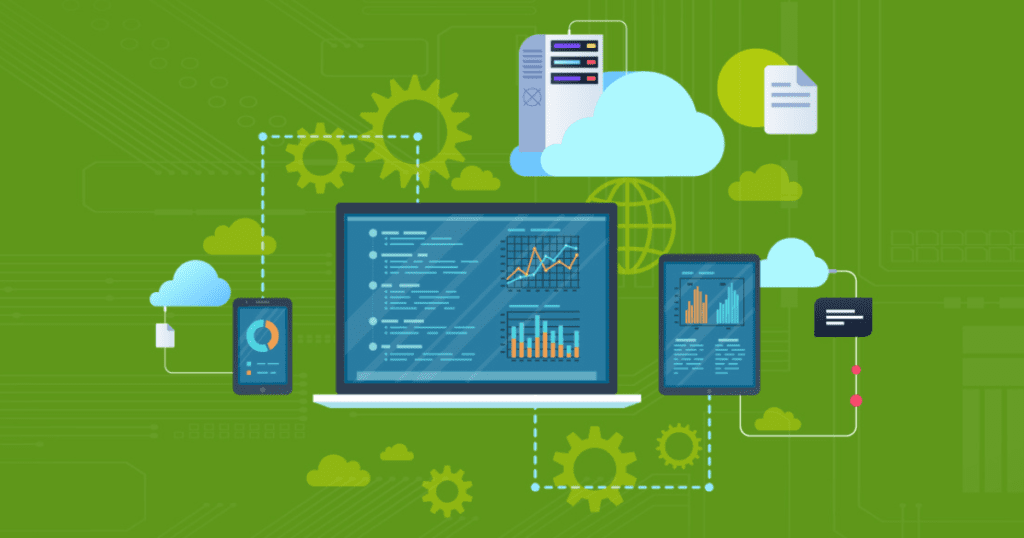
Hosted software, also known as Software as a Service (SaaS), offers a smart and cost-effective solution for businesses aiming to boost their efficiency and productivity. Five Compelling Reasons to Embrace Hosted Software: 1. Cost Savings: By eliminating the need for expensive hardware, software licenses, and IT infrastructure, hosted software ensures cost savings that empower growth. 2. Scalability: Addressing evolving business needs is seamless with hosted software, which effortlessly adapts to changes. 3. Accessibility: Ideal for remote or distributed workforces, hosted software allows access from anywhere with an internet connection. 4. Enhanced Security: Hosted software providers prioritize the latest security measures, safeguarding against cyber threats. 5. Seamless Integration: Streamline workflows by seamlessly integrating hosted software with other crucial business applications. In today’s technology-driven landscape, businesses of all sizes rely on software for streamlined operations and competitive edge. Yet, managing software can become costly and time-consuming. Enter hosted software solutions, a popular choice to overcome these challenges. For a reliable provider, consider the expertise of Millennium Group. Why Millennium Group Stands Out Unmatched Expertise: With over two decades of industry experience, Millennium Group excels in delivering top-tier hosted software solutions. Our dedicated experts constantly refine our products to meet the market’s evolving demands. Seamless Scalability: Adapting to business growth is effortless with our fully scalable hosted software solutions. Easily add or remove users, applications, and features to match your changing needs. Robust Security: Millennium Group prioritizes security, implementing rigorous measures to safeguard your data and systems. Our encrypted and regularly backed-up hosted software ensures unwavering protection. Cost-Efficiency: Eliminate the financial burden of in-house software management. Opt for Millennium Group’s hosted software and enjoy a predictable monthly fee covering all your software requirements. Tailored Support: At Millennium Group, personalized support is at the core of our service. We understand your unique needs and tailor solutions accordingly. Our dedicated support team remains ready to assist whenever needed. In conclusion, for a reliable, scalable, secure, and budget-friendly hosted software solution tailored to your specifications, trust Millennium Group. With extensive experience, unwavering expertise, and a commitment to customer satisfaction, we deliver the optimal solution for your business demands. Elevate your business with Millennium Group’s hosted software solutions today.
A Complete Guide on Access Control Systems
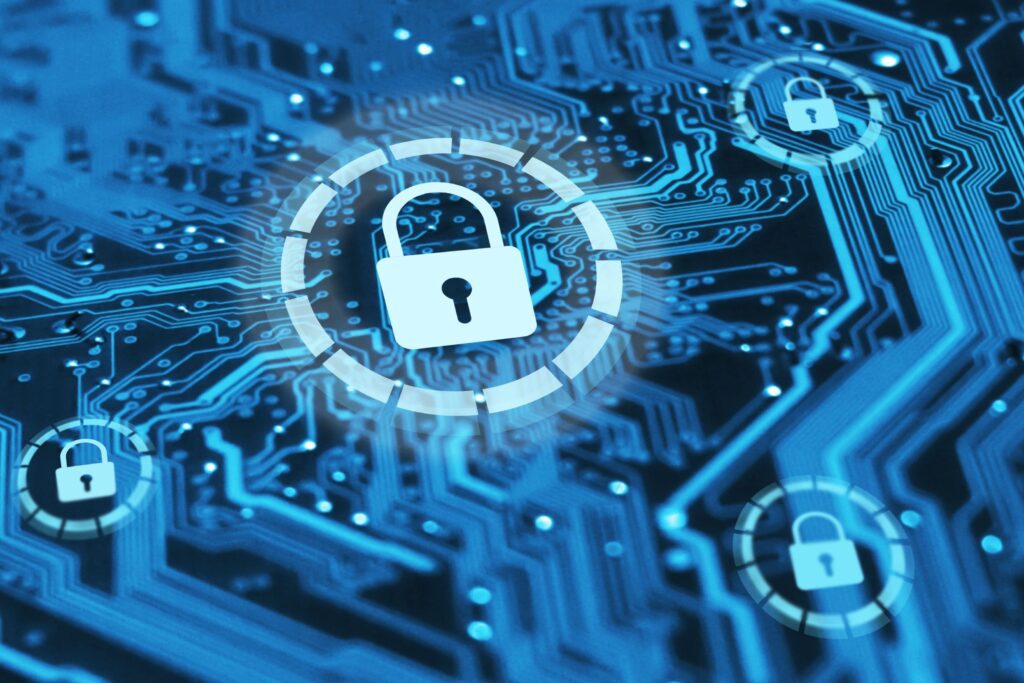
Access control systems are essential in today’s security landscape, providing a reliable way to protect physical spaces and sensitive data. Whether you’re managing a corporate office, a multifamily residential complex, or a healthcare facility, access control solutions offer a streamlined method for securing your premises, ensuring that only authorized individuals are granted access. This guide will explore everything you need to know about access control systems, their features, benefits, and how they can enhance security across various industries. What Are Access Control Systems? An access control system is a security solution used to regulate who can enter specific areas within a building, facility, or restricted zone. These systems ensure that only authorized personnel can enter certain locations, whether it’s an office, server room, or even a secure parking lot. By using authentication methods like keycards, biometrics, PIN codes, or mobile devices, access control solutions provide both physical and digital security. At its core, an access control system helps manage and monitor entry points, offering a high level of security while ensuring that access is granted only to those who have the proper credentials. Why Access Control Systems Matter 1. Reducing Security Risks As security threats continue to evolve, having a robust access control system is more important than ever. In today’s digital and physical world, traditional lock-and-key methods are no longer enough. Modern access control systems use multiple layers of authentication, such as biometric verification and smartcards, to protect against unauthorized entry. For instance, biometric methods like fingerprint or facial recognition are nearly impossible to bypass, offering a higher level of security than conventional PIN codes or keycards. This heightened security significantly reduces the risk of unauthorized access and strengthens overall safety. 2. Streamlining Entry and Exit In fast-paced environments, efficiency matters. Traditional methods of managing access—like physical keys—are slow and prone to human error. With access control solutions, the entry and exit process is fast, automated, and secure. Employees or visitors can access buildings or restricted areas within seconds using smartcards, biometric scans, or mobile devices. Additionally, many cloud-based access control systems integrate with time and attendance systems, allowing businesses to monitor employee hours and enhance operational efficiency. 3. Real-Time Access Monitoring One of the most significant advantages of modern access control systems is the ability to monitor access in real-time. Traditional locks don’t provide visibility into who is entering or leaving a space. However, with access control solutions, every entry and exit is tracked, complete with timestamps, locations, and user credentials. This real-time data allows administrators to quickly detect and respond to security incidents, such as unauthorized access or breached entry points. If a credential is lost or stolen, access can be revoked remotely and instantly, ensuring that your premises remain secure. 4. Flexible and Scalable Security Whether you’re managing a small office or overseeing a large multifamily property, access control systems offer scalability and flexibility. These systems can be easily customized to suit the security needs of any organization. For example, access permissions can be tailored for different users, specifying which areas they can enter and when. This flexibility is especially beneficial for industries that require strict access control, such as healthcare, education, and finance, where sensitive areas must be protected. Key Features of Access Control Systems 1. Authentication Methods The heart of any access control system is its authentication method, which verifies the identity of individuals attempting to enter a secure area. Several authentication methods exist, including: Keycards: Swiping or tapping a keycard at a designated reader grants access to authorized individuals. Biometric Scanning: Fingerprints, facial recognition, and retina scans provide highly secure, unique identifiers for everyone. PIN Codes: Personal identification numbers (PINs) offer a simple, secure method of authentication. Mobile Access: Users can gain access by using their smartphones, leveraging Bluetooth, NFC, or QR code technology. Each method has its benefits, allowing businesses to choose the most suitable solution for their security needs. 2. Control Panels The control panel is the nerve center of an access control system. It processes data from authentication devices (like keycard readers or biometric scanners), stores access credentials, and communicates with locking mechanisms to grant or deny entry. Many modern systems use cloud-based control panels, offering remote management capabilities. 3. Door Hardware The locking mechanism is a crucial component of any access control system. This can range from traditional mechanical locks to advanced electronic locks that can be integrated into the system for greater flexibility. Electronic locks are easier to control, can be remotely locked or unlocked, and are often more secure than traditional locks. 4. Software for Access Management The software component of an access control system allows administrators to manage user credentials, configure access settings, and generate detailed access logs. Many systems now offer cloud-based software that allows businesses to manage their access control remotely, from any location, at any time. 5. Integration with Other Security Systems Integrating cloud-based access control solutions with other security technologies, such as CCTV cameras, alarm systems, and fire detection systems, enhances the overall security infrastructure. For example, integrating access control with surveillance cameras allows businesses to monitor who enters and exits specific areas and verify their identity in real-time. Cloud-Based Access Control Solutions 1. Remote Access and Management Cloud-based access control systems are revolutionizing the way businesses manage security. These systems allow administrators to remotely monitor and manage access from anywhere in the world. This means you can view real-time activity, grant or revoke access, and adjust settings—all from your phone or computer. Cloud solutions also offer greater flexibility, as they don’t require on-site hardware, reducing maintenance costs and providing easier scalability. 2. Cost-Effectiveness and Scalability Cloud-based access control systems are often more cost-effective than traditional, on-premise systems. They eliminate the need for expensive servers and onsite infrastructure, and their scalability allows you to easily add new doors, users, or locations as your business grows. 3. Automatic Updates and Maintenance With cloud-based solutions, updates and maintenance are handled automatically, ensuring that your system always runs the latest software version with the
Revolutionizing the Digital Badging Capabilities in the Access Control Industry
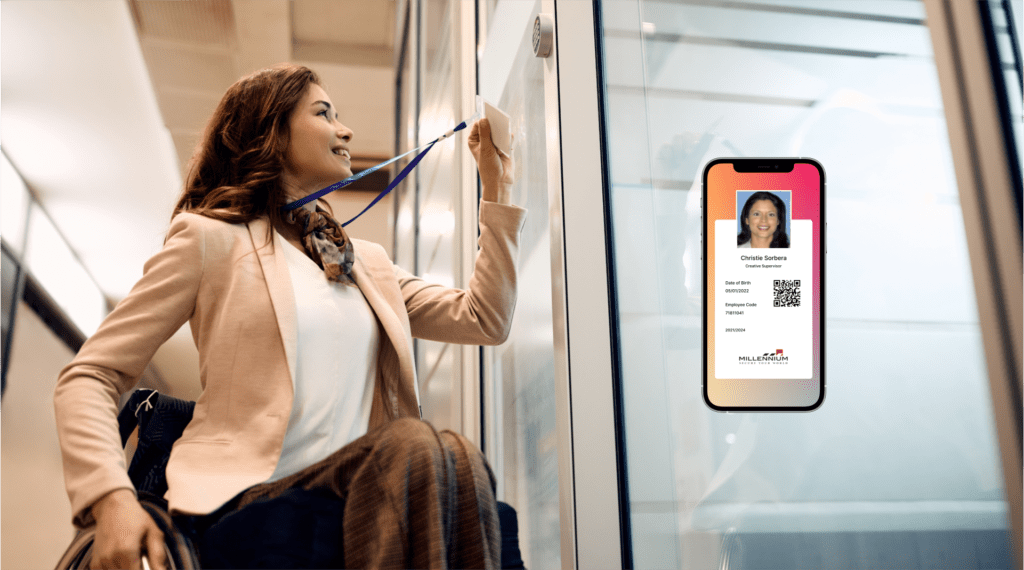
In education, IT, healthcare, or any other industry, it’s vital to recognize and control who enters or exits a facility, however, the subjects of physical access control and identification badges can be a bit confounding. What is a badge entry system? It is an electronic building access control solution that approves access all through the facility utilizing an individual’s ID as the credential. In this way, the identification is utilized for both visual distinguishing proof and access approval. Accordingly, this kind of framework is well-known for industrial and commercial properties. You’ve probably seen badge entry systems previously. A lot of visual media depicts spies swiping ID cards to get to limited regions. But properties don’t need to have a highly classified status to fit the bill for a badge entry system! Properties like schools, college campuses, medical clinics, and places of business ordinarily use badge entry systems for security efforts. Users essentially swipe or scan their ID cards to get to a building and the rooms inside. The badge comes as both an actual card or a digital footprint on your cell phone – the last option comes with countless benefits over the previous one. The framework takes into account the production of custom printed access control credentials. This lets a solitary badge/card or cell phone act as both recognizable proof and access control validation eradicating the requirement for duplication of credentials. The Millennium Badge Module permits you to create and supply your photo ID badges. The badge module consists of several options to fit your needs: a software-controlled digital camera, a high-end imaging capture card, and powerful Ultra Software. Badges can include a bar code, digital signature, or barcoding compatible with our electronic access control systems. The Badging & Access System is very user-friendly and customizable to fit most applications. Data in the system comes from personnel records and identification cards issued by the Federal/State government. Features Of Badging and Identification License via activation Multiple columns and rows per layout Predefined templates Text, image, and drawing objects Ghosting images Image opacity ,asking Manual data entries 1D & 2D barcodes Export card preview Print to Windows printers Single and double-sided printing Import and export images Webcam support Camera support Magnetic coding Create user group profiles Assign/remove users(s) to/from groups Temporarily block user(s) Advanced fraud prevention mechanism Account password expiration feature Hide database information from user(s)/group(s) Hide card template from user (s)/group(s) Benefits of Using Millennium as Badging and Identification Partner Easy Badging Process: Badging module makes the whole process easy. The administrator or operator can place the photo on the already finalized company template in a matter of a few seconds. Further, entry-related data can be copied from the employee’s database. Digital ID – Mobile Identification: Millennium presents a Digital ID that allows the cardholder to carry a digital card on his mobile phone. It can be issued in the form of PDF, JPEG, PNG, etc. instead of carrying a plastic card every time. Safeguard access to your sensitive areas/data: To safeguard access to your premises and/or your data, the employee badge can take on the function of an access control card. This allows you to prevent intrusions by unauthorized persons and, at the same time, protect your employees, infrastructure, property, and data. By adding a barcode, QR code, or direct encoding in the card to the badge, you can easily manage access to your buildings, sensitive zones, and data using the permissions and rights that you define. Default/Custom ID Badge Templates: Millennium has by-default many ID badge templates that you can use for your employees, visitors, contractors, or dealers. Custom-made ID badge templates are also available which makes the system very easy to learn. Read More: All you Need to Know About Access Control System – A Complete Guide Establish a More Professional Image of your Company Portray the colors of your company and strengthen the emotion of belonging with a personalized worker badge developed in line with your company s visual identity. Create: Design your ID card designs through different shapes, font sizes, barcodes, etc Search & Sorting: With the quick search option, get the required data from the cluster in no time and in a precise way. Photo Capture: Take photos utilizing face recognition, auto cropping, and other useful tools. Interface: An interactive and easy-to-use interface that both freshers and experienced graphic designers can use. Placeholder: Use placeholders to smoothly allocate the photo, company logo, barcode, and signature. Conclusion The well-established legacy of a physical keycard for identification being more unassailable than a digital keycard is no longer accurate. Mobile security has grown, and the security exposures of a physical keycard, which can be easily misplaced or cloned, still stay. Similarly, mobile badging provides pervasive, comprehensive security and a personalized experience across all of a company’s platforms, whether on a browser or mobile. While there will still be a role for the physical ID badge, Millennium Ultra has determined to enhance it by offering it a digital twin with features and specifications that other badging companies simply don’t offer.
Elevator Trends: Progression of Stairwells From Mechanical to Automation and Advance Security
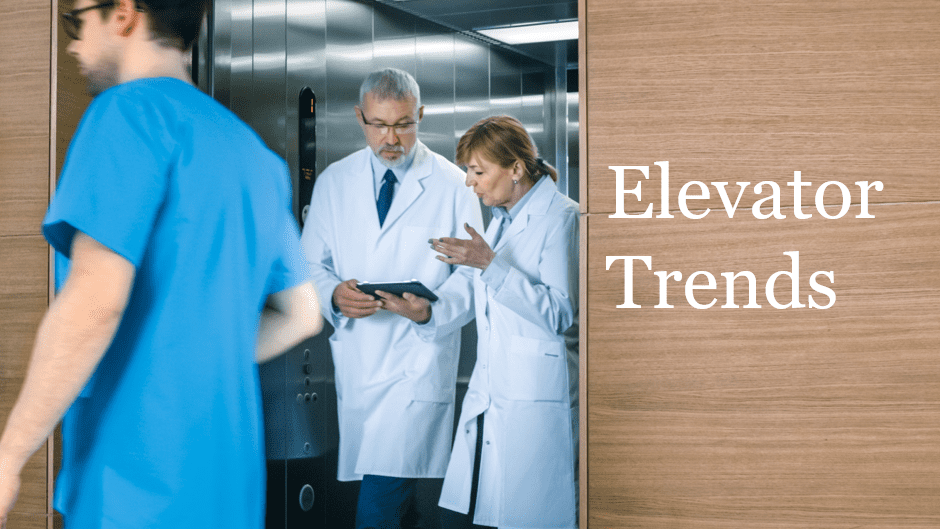
Simple transportation machinery was invented in 1743, and its modernization began in the 19th century. The older elevators were mechanical, of lower quality and they were operated by either being pulled by an animal or a semi-motorized assembly controlled by humans. Belt-driven elevators were used in the beginning, later elevators used steam engines and even oil-water hydraulic systems. Now, with coming of age, we have advanced, connecting skyscrapers, floors after floors with the help of the automated elevator technology and also doubling up with the integration of security systems both inside and outside the elevators. We are building more and more skyscrapers than ever before. Therefore, the use of elevators in those structures is increasingly growing. As a result, the usage of access control and security systems has risen significantly. Hotels, offices, hospitals, and even malls have begun to integrate the use of access cards for their guests and employees, and elevators are now equipped with surveillance cameras to avoid any unforeseeable and inhuman incidents. According to research, the demand for elevators has increased, and with it, the demand for access security systems has increased as well. What’s New and Trending in Elevator Security? With the modernization of the elevators, new security specifications are being added to the software to make them more robust and flexible to meet the changing access control needs in buildings. Millennium spent more than two decants in R&D to understand the ever-shifting needs of the customers and constantly upgraded itself in the elevator industry. This led MGI to integrate the new elevator technology with the trending elevator security system that stood the test of time for the last 25 years into launching advanced elevator security that is both hardware reliable and allows seamless software integration. The new elevator features are: The hardware components of the board are of top quality. Millennium provides a relatively compact design with a faster and better working unit. Millennium has reduced the size of its part as hardware has improved, resulting in a design that is condensed and simple to install. As the processor used by the MGI is quick and steady, it ensures easy and fast updates to the hardware, making it smooth to operate. How to choose the best Elevator Access Security Solution? In order to choose an access security solution that perfectly fits your requirements, you must look for the following features: Ease of Use: In all workspaces, user-friendly equipment is favored. The convenience decreases complexity and also saves time. Taking this into account, Millennium provides its customers with a variety of pre-engineered boards that are lightweight, pre-wired, feature with the latest hardware, and are relatively simple to mount and install. Flexible: This is a critical element. A better user interface leads to better results and reflects the flexibility of the product. Millennium’s software called Millennium Ultra 5.0.0 is smart and performance-driven. In addition, the software added the following new features: Network addition for compatibility (coming soon) Smoother working with or without a network connection New design to integrate multiple boards together Reliable: It is an important factor when choosing a security system. Millennium’s Elevator hardware system security has proven to be reliable and is still the most desired solution in the market, acknowledged by the dealers. New products are released with the same reliability as older products, and all of the previously popular features are improved and reintroduced in the newer products. MGI stands out in the elevator industry due to the high quality and specifications of its goods. They design software-integrated elevators that are simple to operate and provide the best results. The software they use is backward compatible and offers the most versatility. The installation is easy, and these elevator systems provide the highest level of reliability. With all of these facilities in place, MGI makes a strong impression on the industry. Read more about: Hardware Reliability in Access Control Smartphone door open system- Mobile Connect Cloud-hosted access control CCTV video software integrations Biometric door open systems
Reduce Theft in Your Retail Store With Access Control

More than a dozen states began emerging from their coronavirus lockdowns, leaving business owners, workers and consumers to decide what normal means now. Unfortunately, before the pandemic retail stores have always been vulnerable to theft and are still much vulnerable. That’s because these stores have two things every thief wants in a hurry: valuables and cash. However, retail store owners/managers can easily fight back against theft by implementing certain security measures and protocols. An Access control is used to identify an individual, authenticate them, and then permit the individual entrance. Here are some security measures that retail stores should implement include: • Installing security cameras• Using security mirrors• Installing entrance alert sensors• Training employees• Posting signage Throughout this blog, we’ll closely look at each of these security measures and how they can help to reduce theft in retail stores. Security measure #1: Installing security cameras Security cameras help you keep an eye on the entire store, whether you’re on property or not.Depending on your business needs, you can choose to simply steam video footage in real-time to help you monitor and catch any theft as it happens or you can record and store footage to help authorities track down thieves after the crime is committed. Cameras that are placed in highly visible areas where they can be seen by potential thieves/shoplifters can help prevent crime before it ever occurs. Security measure #2: Use security mirrors No matter how big or small the space, your retail store likely has multiple “blind spots. Strategically-placed security cameras can help you keep an eye out, even when you’re busy helping other guests. These round/dome-shaped mirrors (often called convex mirrors), allow you to see hidden or hard-to-see areas that would normally be out of view. These mirrors also help deter thieves from committing crimes by placing their every move on display. Security measure #3: Install entrance alert sensors Entrance/exit alert sensors have two clear advantages:They let your staff know when someone enters the store so that they can be visible and vigilantThey alert potential shoplifters to the fact that their presence is known, which makes them less likely to steal in the first place The last thing any thief wants is attention. These sensors work by projecting a loud chime or bell noise when it senses some entering or exiting the store. This prevents potential shoplifters from slipping in/out unnoticed and will make them think twice about attempting any sort of theft. Security measure #4: Train employees All staff members should be trained on how to spot and respond to theft. With everyone on the same page and knowing what to look for, stores stand a better chance of effectively combating theft.A few common practices employees should learn in order to prevent theft include:Being extra vigilant during busier hoursClosely monitoring customers with backpacks, bulky clothing or large handbagsTaking notice of customers who seem to be more focused on watching employeesLooking for signs of nervousness or odd behaviorCasually approach any suspicious customers and offer assistance Security measure #5: Post signage Posting anti-theft signs lets thieves and customers know that the store is under constant watch/surveillance. This can be a cheap and very effective way to discourage theft.Keep in mind, though, that it’s important to place these signs strategically, where they can’t be missed. Placing signs right on the front window/door as well as in dressing rooms or back areas/hard-to-monitor places in the store is a good start.You can typically purchase anti-theft signage from any security company or you can make them yourself (to save money). However, beware of any copyright infringement if you make your own signs. Security measure #6: Keep the store organized Shoplifters love disorganized stores because it makes it very hard for staff to quickly spot missing items. That said, it’s in your best interest to maintain a neat and organized shop.When your store is organized, potential shoplifters will be less likely to take an item, for fear that staff will quickly notice missing items. Choose Millennium Group Inc. to provide you with the best Access Control System for your organization.
Importance of Hardware Reliability in Access Control
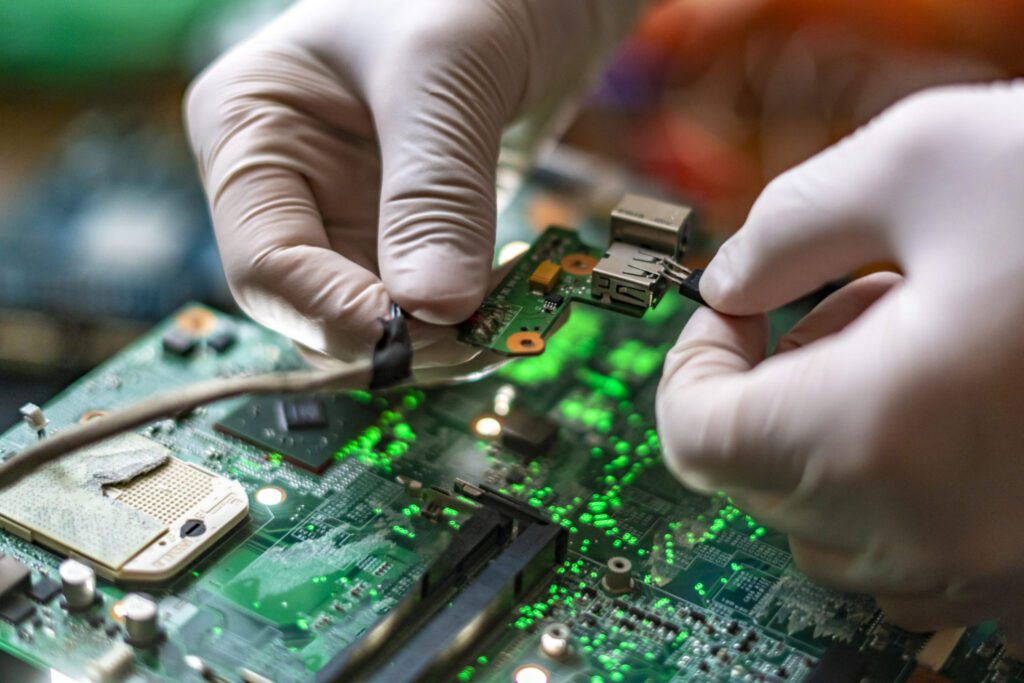
Hardware reliability is the need of the hour Have you ever purchased a door access control system that always use to give a functional problem, never open when you swap a door reader because the door hardware was defective? Or the elevator encountered some hardware malfunction which led to severe inconvenience for you and your office employees. These are some of the common hardware issues that we come across in our day-to-day life which in turn hamper our productivity and further provide discomfort and compromises our security. Situations like these call out for reliability. The hardware that can perform and is valuable in proportion to the dollar spent purchasing it. Hence, hardware reliability is the need of the hour. It enables the employees and people to continue to use office or building access without issue and to do their jobs competently. Role of Hardware and Software Integration: The performance of a specific access control device is based on its absolute reliability and precision, and if there is some form of latency or fault in the hardware, it becomes extremely difficult for consumers to have an efficient security system installed in their spaces. In the case of dependable hardware, one can add new parts to the panels to add new features and make them easier to use. Moreover, any access control has both software and hardware, and for software to operate smoothly, the hardware must also perform properly, this is where hardware reliability and integration comes into play. Proper device integration helps in connecting software to hardware in a seamless manner. Hence, there is a great role of hardware reliability and integration in access control as the more the assembly functions properly, the easier it gets for the user. In addition, this leads to a good customer and brand relation. The Right Software Integration Solution: This technical era is not just all about properly functioning hardware, rather it is more focused on the convenience and ease-of-use of the device. Companies are working hard to develop their user interface because software is critical to improving the product’s experience and performance. Not to mention that a device with good usability and consistency has higher reliability. Millennium has a fantastic solution for this. The business provides excellent software like Ultra 5.0.0 that greatly benefits its customers and its backward hardware compatibility. The software is programmed in such a way that it can operate with older hardware as well, so even if a consumer has an older version of the hardware, simply updating a few pieces, the software will provide them with the best possible results with their pre-installed devices. Access Control Hardware Solution: The access control market provides various hardware options to suit your needs, but the Pre-Engineered Hardware system works best in terms of reliability and functionality as it comes with pre-fixed wiring and ready to use. For instance, your requirement for a wireless door access control system can help in securing the entrance of your schools, hospitals, and office space effortlessly with the assistance of the pre-engineered hardware solution provided by Millennium. Furthermore, talking about the value of the hardware, Millennium’s Elevator hardware system security has proven to be reliable for more than 25 years and is still the most desired solution in the market by most of the dealers. Now, with the coming of the new era, MGI decided to expand its more than two-decade-old knowledge with the added expertise and launch a New Elevator Hardware that proves to be a perfect blend of the past, present, and future elevator security demands. Looking at this surge in the demand, Millennium Group Inc., is currently offering free practical training for their access control products. It is starting with ‘New Elevator Hardware Training’ where a live session will be conducted on ‘New Elevator Hardware Best Practices’ to help you understand the system set-up, installation, and programming processes. Training starts at 2:30 pm on Wednesday, May 26, 2021. You can click here to register for the free training on the New Elevator Hardware Best Practices. Read more about: Smartphone door open system- Mobile Connect Cloud-hosted access control CCTV video software integrations Biometric door open systems Alarms and emergency notification integrations
Why schools should switch to Mobile Credentials during the Pandemic

Year by year our dependence on mobile technology continues to increase. It is the start of a new decade and definitely, technology will upgrade. As our society becomes more reliant on mobile technology, adopting mobile credentials into your security system can make your facilities be more reliable, run efficiently, and provide a great experience. According to the CDC, an individual may get COVID-19 by coming in to contact with a contaminated surface or device, and then touching their mouth, nose, or eyes. Smartphone credentials limit contact for access control to a smartphone typically touched and used only by its owner. Granting access to secured places requires the administrator’s presence. This can be difficult or frustrating for both the user and the administrator. Mobile Connect makes it easy to command the card/phone readers. Authorized personnel can log in, unlock doors grant or revoke access to a specific location from their comfort zones. Mobile Connect provides increased security, enables ease of operation and the flexibility to easily access doors by approved users. All Mobile Connect credentials are securely managed through the Millennium software platform and are easily assigned through the administrator to all mobile-enabled teachers, students or employees in a school. We provide customized access control systems for primary, secondary, and post-secondary educational institutions. Access control for educational institutions often come with special integration requirements for components such as student IDs. At Millennium Group, we work hard to accommodate your unique range of access control requirements and can implement systems based on the different types of users and their status and permissions within the school. In these turbulent times, however, we strongly recommend our Mobile Connect system. Choose Millennium Group Inc. to provide you with the best Access Control System for your organization.
The Essential Need for Healthcare Access Control Solutions

In today’s dynamic healthcare environment, ensuring the safety of patients, staff, and sensitive information is more critical than ever. Hospitals and healthcare facilities face unique challenges, requiring comprehensive security measures to address physical and digital vulnerabilities. This article explores the pivotal role of healthcare access control solutions and hospital security systems in safeguarding these vital institutions. The Vulnerability of Healthcare Facilities Hospitals are bustling environments where the safety of patients and staff is paramount. Patients rely on a secure setting to aid their recovery, while staff members need a safe workplace to provide optimal care. The complex and open nature of healthcare facilities makes them susceptible to various security risks, ranging from unauthorized access to sensitive areas to the protection of confidential patient information. Key Components of Healthcare Security Systems Comprehensive Healthcare Access Control Solutions Access control systems for healthcare and hospital facilities provide tailored solutions to address the specific needs of hospitals. By utilizing advanced credentialing systems, hospitals can regulate access to restricted areas such as operating rooms, pharmacies, and data centers. These systems ensure that only authorized personnel can enter sensitive zones, reducing the risk of unauthorized access. Integrated Surveillance Solutions Hospital and healthcare security systems often combine access control with video surveillance to provide a robust security framework. CCTV cameras monitor real-time activities, while integrated systems allow for seamless synchronization between access events and visual recordings. This enables security teams to verify incidents quickly and respond effectively. Mobile and Contactless Access Modern healthcare access control solutions prioritize convenience and hygiene through mobile and contactless access options. Smartphones, wearables, and biometric credentials replace traditional keys and cards, enabling secure and efficient entry. These technologies also support dynamic credential management, allowing hospitals to update access rights instantly. Multi-Factor Authentication (MFA) To bolster security further, MFA combines two or more verification methods, such as PINs, mobile credentials, and biometrics. This approach ensures that even if one credential is compromised, unauthorized access is thwarted. Addressing Digital and Physical Security Protecting Patient Information The digital age has brought heightened concerns about data breaches. Hospital security systems must comply with regulations like HIPAA to safeguard electronic health records (EHRs) and other sensitive information. Healthcare access control systems integrated with cybersecurity measures provide an additional layer of protection for patient data. Emergency Preparedness Healthcare facilities must be prepared for emergencies, including natural disasters and security threats. Healthcare access control solutions facilitate quick lockdowns, ensuring that critical areas are secured instantly. These systems can also integrate with emergency communication platforms to provide real-time updates and instructions. Benefits of Advanced Hospital Security Systems Enhanced Patient and Staff Safety By implementing healthcare access control solutions, hospitals create a safer environment for everyone. Controlled access reduces the risk of intrusions, while surveillance systems deter criminal activity and provide evidence in case of incidents. Operational Efficiency Automated access control systems for hospitals streamline administrative tasks, such as managing visitor passes and scheduling access rights. This allows hospital staff to focus on their core responsibilities without compromising security. Regulatory Compliance Access control systems for healthcare and hospital facilities ensure adherence to industry regulations. By maintaining detailed logs of access events, hospitals can demonstrate compliance with audit requirements and avoid potential penalties. Customizable Solutions for Unique Needs Millennium Group Inc. provides customizable hospital security systems designed to meet the diverse needs of healthcare facilities. Our solutions include: Cloud-based healthcare access control solution for centralized management. Video-integrated systems for enhanced situational awareness. Mobile credentialing for flexible and hygienic access. Automation and analytics to streamline operations. Ready to enhance the security of your healthcare facility? Contact Millennium Group Inc. today to learn how our healthcare access control solutions can safeguard your patients, staff, and sensitive information. Let’s build a secure future for your organization together. Millennium is a scalable, hosted, access control platform that services any type of real estate. Our cloud-based solution allows managers and tenants to efficiently manage their physical security from anywhere while enhancing experience and driving profitability.
